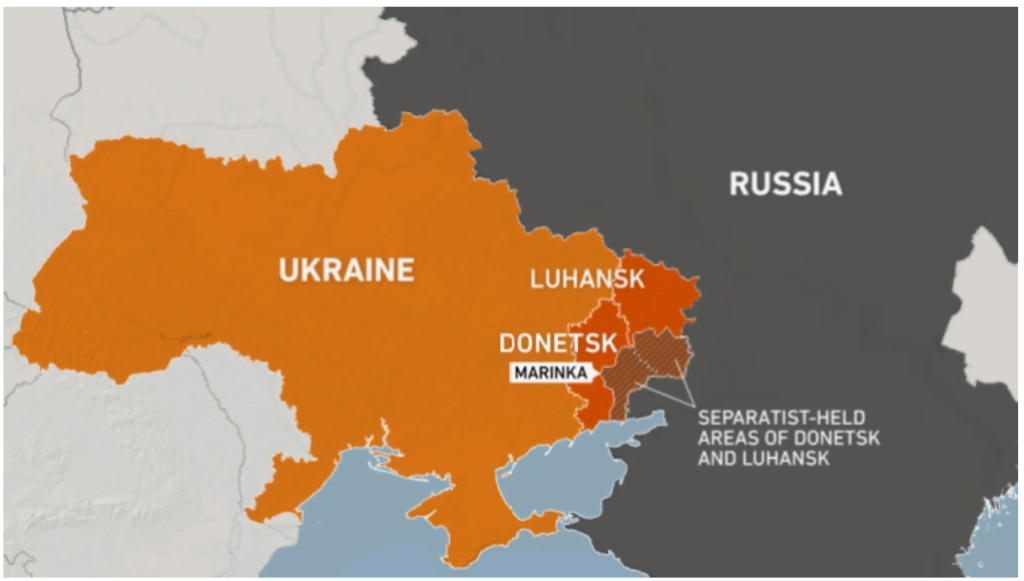Professor Jo Crotty

In the last 24 hours I have received a number of messages asking ‘Why Ukraine?; and why now?’
Although media commentary has focused on Ukraine’s NATO ambitions, and Russia’s unwillingness to acquiesce to NATO forces on its border; the answer is more complex.
First, since the end of the Soviet Union 30 years ago, Ukraine has leant both toward Europe and reasserting its own identity, independent of Moscow. This has included allowing visa-free travel for all EU citizens, and aligning many of its governance structures to EU membership. When former President Viktor Yanukovych refused to sign a free trade agreement with the EU in 2013, Ukrainian citizens took to the streets in what became known as the Maidan or Revolution of Dignity. These protests led both to the removal of Yanukovych, but also a separatist uprising in the Donbass area of Eastern Ukraine (see below). This was not the first time the Ukrainian people had taken to the streets to remove their leader. They had done so before in 2004 during what has become known as the Orange Revolution. When exit polling revealed that the outgoing president’s candidate had stolen the election; people took to the streets to remove him. This kind of popular mobilisation, coupled with a lack of influence over Ukraine – in contrast to that of Belarus – poses a (perceived) threat to Putin’s Russia.

Second, the Soviets continued the Tsar’s policy of ‘Russification’ through which ethnic Russians were resettled across the Union. Russian was also the official first language – hence Ukrainian’s now asserting the Ukrainian spelling of their capital Kyiv, rather than the Russian Kiev. As a result, there is now is a large population of ethnic Russians living in parts of Ukraine, including the Donbass region on the eastern border with Russia. This region is rich in coal and other resources and was part of the reason why Hitler decided to go south east, rather than take Moscow, during World War II (with its attendant consequences). Following the Maidan, rebels in this region started a conflict with the purpose of ceding from Ukraine. This conflict has been going on since 2014 and has resulted in 1.5 million internally displaced persons (IDPs) (UNHCR) fleeing the region. This is the largest number of IDPs in European soil since the conflict in the former Yugoslavia; yet it has gone almost completely unreported. Support for the rebels’ desiring to cede from Ukraine, has been the pre-text on which Putin could start amassing troops.
Third, Putin has problems at home. Despite being the first country in the world to develop an effective Covid-19 vaccine, Russia still only have 48% of its adult population fully vaccinated. This has been attributed to a wide-spread lack of trust in the Russian state – a state that has largely removed any recourse at the ballot box to dispatch an ineffective government. So a war with Ukraine has two advantages for Putin, a distraction from problems at home, and a way to reassert his ‘strong leader’ image after 20 years in power. It also prevents the types of popular protests that have removed two Ukrainian presidents, from spilling over the border.
Finally, Putin also he knows that the West are going to do very little to stop him. So far NATO has ruled out sending troops. Economic measures such as removing Russia from the SWIFT banking system, would leave them unable to trade in US dollars, but would likely be as harmful to Western economies, and such actions do not have an immediate impact. The West also did nothing when Russia annexed Crimea in 2014; inaction that has echoes of appeasement in the face of Hitler’s annexation of the Sudetenland in 1938. Sadly it is now the Ukrainian people who will pay the price. Our thoughts and prayers go out to them.
Professor Jo Crotty is Director of the Institute for Social Responsibility at Edge Hill University and an expert in the former Soviet Union.
If you would like to contribute your own piece, reflecting your own research and/or constituencies as they relate to current events in Ukraine, please submit them via [email protected]
